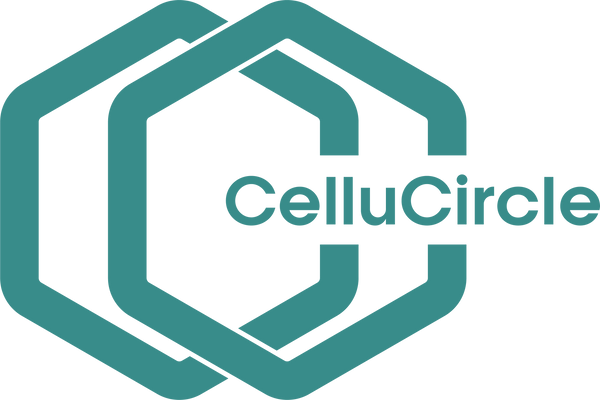In the first instalment of our interview series with CelluCircle team members and industry insiders, we’re excited to introduce Varvara Kalkavoura, the driving force behind Chemical Engineering & Development at CelluCircle.
Please tell us a little bit about your background and how you ended up at CC?
I am initially coming from Greece and I am living in Sweden for almost 12 years. My first time in Sweden was on 2009 that I only came for 6 months for the ERASMUS programme. I have a PhD in Materials Chemistry from Stockholm University and a Diploma in Chemical Engineering from the National Technical University of Greece (NTUA) and a M.Sc. in Sustainable Technology from Kungliga Tekniska Högskolan (KTH). I have worked in a company within water purification in Greece and also at the Swedish Environmental Research Institute (IVL). My PhD thesis was on thermally insulating foams based cellulose nanomaterials. Since 2022, I work as a Postdoctoral Researcher at Stockholm University on the textile recycling and upcycling. From this year, I am also coordinator of the Stockholm University Center for Circular and Sustainable Systems (SUCCeSS), a research center focusing on promoting interdisciplinary research nationally and internationally. During my employment as postdoctoral researcher, me and my colleagues developed several textile upcycling processes. One of the process repurposes the textiles without the need to separate the constituents making the upcycling of textiles more straightforward. At the same time, we have also developed a process to separate synthetic and cotton fibres exploiting their separate valorisation. Since I am one of the patent inventors of CelluCircle, I am also partially employed at CelluCircle aiming to scale up our lab processes and soon establish our own pilot line and factory!
What attracted you to working for CC?
I got really excited to see how a lab-scale process can be upscaled and be useful for the society. The textile waste is a real problem and currently there are no feasible solutions in the market on how to repurpose and valorise them. I am particularly excited since the processes that CelluCircle aims to upscale are partially developed by me and I am really hoping that very soon we will have all the answers we need to start a full production.
What element of the technology most excites you?
This is a very hard question. Technology drives our society forward and is necessary for easing our everyday lives while keeping a high standard of living. Waste has become a real trouble for humanity and the environment and I am very much hoping that we can find ways to minimise the anthropogenic impact. I am happy that CelluCircle uses a waste fraction as raw material because the success of CelluCircle will lead in significant waste minimisation. At the same time, the use of a waste fraction as a raw material, minimises also the use of virgin resources. Textiles contain large amount of fossil-derived fibres but also a lot of cotton and both lead in great use of resource reserves but also water, land and chemicals. The technology of CelluCircle will be groundbreaking and I am looking forward to the future challenges!
What are you working on right now?
Right now, I continue my fundamental research on textile waste valorisation and how the materials derived from the textile up-cycling can be used in different applications. I am also working on tackling the challenges of upscaling the processes of CelluCircle which is more than exciting and fulfilling. Finally, I supervise PhD and master student at the University and I am involved in planning the activities of SUCCeSS.
We know the technology can have multiple end uses, but how do you envision the technology being used in the future?
I think I have partially answered this question before. In this question, I totally see the bright and optimistic side. I definitely believe that consumers should minimise the consumption of clothing and understand the drawbacks of fast fashion. However, the technology and solutions that CelluCircle offer can minimise the impact of textile waste while creating new insightful and valuable materials!
What is the next key step in the technology roadmap?
The next step in the journey of CelluCircle is to successfully complete all pilot trials while planning to manufacture the first factory which can be then further expanded. To do so, all uncertainties need to be answered within this year and then we are ready to go high!
Any final message for our followers?
I would like to share that the technology of CelluCircle is really promising and has been the result of many years of work in the lab. Please stay tuned to see our updates and I hope that we will not disappoint you!

